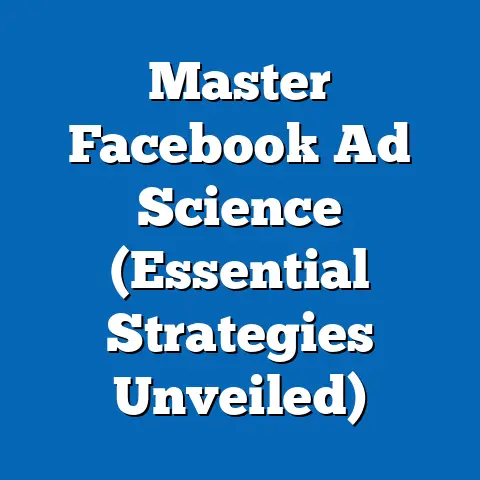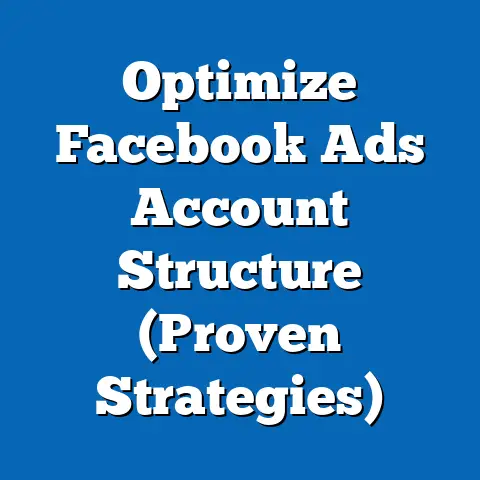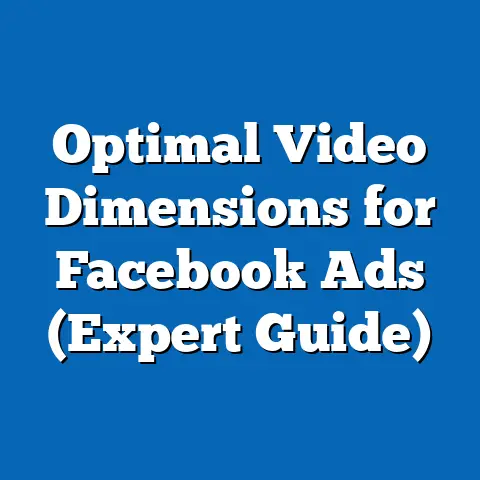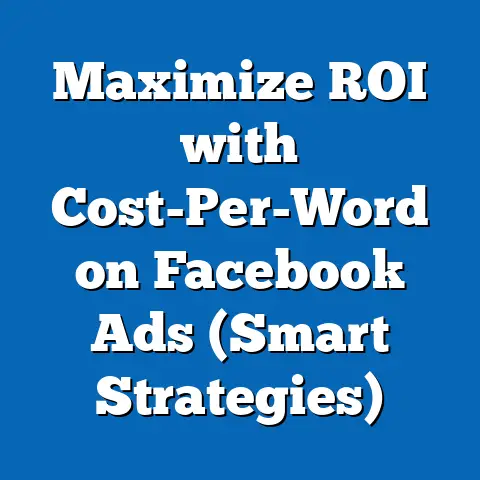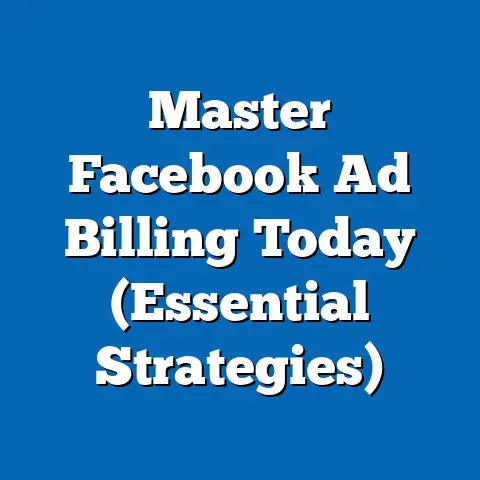Boost Facebook Ads with ChatGPT Strategies (Insightful Guide)
What if you could unlock the true potential of your Facebook ads with a simple conversation? Imagine having an AI assistant that not only understands your target audience but also crafts compelling ad copy, optimizes your campaigns in real-time, and analyzes performance metrics, all while you focus on your core business activities. Welcome to the future of digital marketing, where ChatGPT empowers your Facebook advertising strategy like never before.
I remember when I first started with Facebook ads, I spent hours agonizing over the perfect headline and ad copy. I A/B tested everything, but it felt like throwing spaghetti at the wall to see what stuck. If only I had ChatGPT back then! Now, this powerful AI tool is changing the game, and I’m excited to share with you how you can leverage it to supercharge your Facebook ad campaigns.
Understanding Facebook Ads
Facebook Ads are a powerful tool for businesses of all sizes to reach a massive audience with targeted advertising. With billions of active users, Facebook provides an unparalleled platform for connecting with potential customers, building brand awareness, and driving sales.
- Why Facebook Ads Matter: In today’s digital landscape, organic reach is becoming increasingly limited. Facebook Ads allow you to bypass these limitations and directly target your desired audience based on demographics, interests, behaviors, and more.
- Different Ad Types: Facebook offers a variety of ad formats to suit different marketing goals. Some of the most common include:
- Image Ads: Single image ads are simple yet effective for showcasing products or services.
- Video Ads: Video ads are highly engaging and can be used to tell stories or demonstrate product features.
- Carousel Ads: Carousel ads allow you to display multiple images or videos in a single ad, perfect for showcasing a range of products or highlighting different features.
- Collection Ads: Collection ads are designed for e-commerce businesses, allowing users to browse and purchase products directly from the ad.
- The Algorithm’s Role: Facebook’s advertising algorithm plays a crucial role in determining which ads are shown to which users. Understanding how the algorithm works is key to optimizing your campaigns and maximizing your return on investment (ROI). The algorithm considers factors like bid amount, ad quality, and estimated action rates to deliver ads to the most relevant users.
- Image Ads: Single image ads are simple yet effective for showcasing products or services.
- Video Ads: Video ads are highly engaging and can be used to tell stories or demonstrate product features.
- Carousel Ads: Carousel ads allow you to display multiple images or videos in a single ad, perfect for showcasing a range of products or highlighting different features.
- Collection Ads: Collection ads are designed for e-commerce businesses, allowing users to browse and purchase products directly from the ad.
Takeaway: Facebook Ads provide a powerful platform for reaching your target audience, but understanding the different ad types and how the algorithm works is essential for success.
The Rise of AI in Marketing
Artificial intelligence (AI) is rapidly transforming the marketing landscape, and for good reason. AI-powered tools and technologies are enabling marketers to automate tasks, personalize experiences, and gain deeper insights into customer behavior.
- AI’s Impact on Marketing: AI is being used in various aspects of marketing, including:
- Content Creation: AI can generate high-quality content, from blog posts and social media updates to ad copy and product descriptions.
- Personalization: AI can analyze customer data to deliver personalized experiences, such as targeted ads, product recommendations, and email campaigns.
- Data Analysis: AI can process vast amounts of data to identify trends, patterns, and insights that would be impossible for humans to uncover manually.
- Automation: AI can automate repetitive tasks, such as scheduling social media posts, responding to customer inquiries, and optimizing ad campaigns.
- Benefits of AI-Driven Campaigns: There are numerous benefits to using AI in your ad campaigns:
- Increased Efficiency: AI can automate tasks, freeing up marketers to focus on more strategic activities.
- Improved Targeting: AI can analyze data to identify the most relevant audience segments for your ads.
- Enhanced Personalization: AI can deliver personalized ad experiences that resonate with individual users.
- Better ROI: By optimizing campaigns in real-time, AI can help you achieve a higher return on your ad spend.
- Content Creation: AI can generate high-quality content, from blog posts and social media updates to ad copy and product descriptions.
- Personalization: AI can analyze customer data to deliver personalized experiences, such as targeted ads, product recommendations, and email campaigns.
- Data Analysis: AI can process vast amounts of data to identify trends, patterns, and insights that would be impossible for humans to uncover manually.
- Automation: AI can automate repetitive tasks, such as scheduling social media posts, responding to customer inquiries, and optimizing ad campaigns.
- Increased Efficiency: AI can automate tasks, freeing up marketers to focus on more strategic activities.
- Improved Targeting: AI can analyze data to identify the most relevant audience segments for your ads.
- Enhanced Personalization: AI can deliver personalized ad experiences that resonate with individual users.
- Better ROI: By optimizing campaigns in real-time, AI can help you achieve a higher return on your ad spend.
I remember reading a report that showed companies using AI for marketing saw an average of 20% increase in sales leads. That really opened my eyes to the potential of AI!
Takeaway: AI is revolutionizing marketing, enabling businesses to automate tasks, personalize experiences, and achieve better results.
What is ChatGPT?
ChatGPT is a cutting-edge language model developed by OpenAI. It’s designed to understand and generate human-like text, making it a powerful tool for a wide range of applications, including marketing.
- How ChatGPT Works: ChatGPT is trained on a massive dataset of text and code, allowing it to understand the nuances of language and generate coherent, relevant responses. It uses a transformer-based architecture, which enables it to process information in parallel and learn complex relationships between words and concepts.
- ChatGPT for Marketing: In the realm of marketing, ChatGPT can be used for:
- Content Creation: Generating blog posts, social media updates, ad copy, and product descriptions.
- Customer Interaction: Responding to customer inquiries, providing support, and engaging in conversations.
- Data Analysis: Analyzing customer feedback, identifying trends, and generating insights.
- Real-World Success: I’ve seen businesses use ChatGPT to automate their customer service, create engaging social media content, and even write entire marketing plans. The possibilities are truly endless.
- Content Creation: Generating blog posts, social media updates, ad copy, and product descriptions.
- Customer Interaction: Responding to customer inquiries, providing support, and engaging in conversations.
- Data Analysis: Analyzing customer feedback, identifying trends, and generating insights.
Takeaway: ChatGPT is a powerful language model that can be used to automate tasks, personalize experiences, and gain deeper insights into customer behavior.
Strategies to Boost Facebook Ads with ChatGPT
Here’s where the rubber meets the road. Let’s dive into specific strategies you can use to leverage ChatGPT to improve your Facebook ad campaigns:
4.1. Crafting Compelling Ad Copy
One of the most straightforward ways to use ChatGPT is to generate ad copy. I’ve found it particularly helpful for brainstorming headlines and body text.
- Generating Headlines: I often give ChatGPT a brief description of my product or service and ask it to generate 10 different headlines. Then, I pick the ones that resonate most and refine them further. For example, if I’m advertising a new online course on Facebook marketing, I might ask ChatGPT: “Generate 10 headlines for a Facebook marketing course that helps beginners learn how to create successful ad campaigns.”
- Writing Persuasive Body Text: Once you have a strong headline, you need compelling body text to convince users to click on your ad. I use ChatGPT to generate different versions of the body text, focusing on the key benefits and features of my product or service. For example, I might ask ChatGPT: “Write persuasive body text for a Facebook ad promoting a Facebook marketing course. Highlight the benefits of learning Facebook marketing and the features of the course.”
- Clear Calls to Action: A clear call to action (CTA) is essential for driving conversions. I use ChatGPT to generate different CTAs, such as “Learn More,” “Sign Up Now,” or “Get Started Today.” Then, I A/B test different CTAs to see which ones perform best.
Example:
- Product: Online course on Facebook marketing
- Prompt to ChatGPT: “Generate a Facebook ad for an online course on Facebook marketing that helps beginners learn how to create successful ad campaigns. Include a headline, body text, and call to action.”
- ChatGPT Output:
- Headline: Master Facebook Ads: From Beginner to Pro in Weeks!
- Body Text: Ready to unlock the power of Facebook advertising? Our comprehensive online course teaches you everything you need to know to create successful ad campaigns, even if you’re a complete beginner. Learn how to target the right audience, write compelling ad copy, and optimize your campaigns for maximum ROI.
- Call to Action: Enroll Now!
- Headline: Master Facebook Ads: From Beginner to Pro in Weeks!
- Body Text: Ready to unlock the power of Facebook advertising? Our comprehensive online course teaches you everything you need to know to create successful ad campaigns, even if you’re a complete beginner. Learn how to target the right audience, write compelling ad copy, and optimize your campaigns for maximum ROI.
- Call to Action: Enroll Now!
Takeaway: ChatGPT can be a valuable tool for generating ad copy, but it’s important to tailor the output to your specific audience and marketing goals.
4.2. Target Audience Analysis
Understanding your target audience is crucial for creating effective Facebook ad campaigns. ChatGPT can help you analyze audience data and generate insights that inform your targeting strategy.
- Analyzing Audience Data: I often feed ChatGPT demographic data, interests, and behaviors of my target audience and ask it to identify key characteristics and patterns. For example, if I’m targeting small business owners, I might ask ChatGPT: “Analyze the following data about small business owners: age range 25-54, interests include marketing, finance, and technology, behaviors include using social media for business and attending industry events. Identify key characteristics and patterns.”
- Identifying Audience Segments: Based on the analysis, ChatGPT can help you identify different audience segments and tailor your ads accordingly. For example, you might identify segments such as “tech-savvy small business owners” or “budget-conscious small business owners” and create ads that speak to their specific needs and interests.
- Tailoring Ads: Once you’ve identified your audience segments, you can use ChatGPT to generate ad copy that resonates with each segment. For example, you might create ads that highlight the technical benefits of your product for the “tech-savvy” segment and ads that emphasize the affordability of your product for the “budget-conscious” segment.
Takeaway: ChatGPT can help you analyze audience data, identify audience segments, and tailor your ads for maximum impact.
4.3. A/B Testing and Optimization
A/B testing is a critical component of any successful Facebook ad campaign. ChatGPT can help you set up A/B tests and interpret the results to optimize your ad performance.
- Setting Up A/B Tests: I use ChatGPT to generate different versions of my ad copy, headlines, and CTAs for A/B testing. Then, I create different ad sets in Facebook Ads Manager, each targeting the same audience but using different versions of the ad.
- Interpreting Results: Once the A/B test has run for a sufficient amount of time, I use ChatGPT to analyze the results and identify which version of the ad performed best. For example, I might ask ChatGPT: “Analyze the results of an A/B test comparing two different headlines for a Facebook ad. Headline A had a click-through rate of 2%, while Headline B had a click-through rate of 3%. Which headline performed better and why?”
- Optimizing Performance: Based on the results of the A/B test, I use ChatGPT to generate new versions of the ad that incorporate the elements that performed best. For example, if Headline B performed better, I might use ChatGPT to generate variations of Headline B that further optimize its performance.
Takeaway: ChatGPT can help you set up A/B tests, interpret the results, and optimize your ad performance.
4.4. Engaging with Customers
Responding to customer inquiries and comments related to your ads is essential for building trust and driving conversions. ChatGPT can help you manage customer interactions and provide timely responses.
- Managing Inquiries: I use ChatGPT to generate responses to common customer inquiries, such as questions about pricing, features, or shipping. Then, I can use these responses as templates for responding to customer inquiries in Facebook Ads Manager.
- Responding to Comments: I also use ChatGPT to generate responses to customer comments on my ads. This helps me engage with customers and address any concerns they may have.
- Improving Engagement: By providing timely and helpful responses, you can improve customer engagement and build trust in your brand.
Takeaway: ChatGPT can help you manage customer interactions and provide timely responses, improving customer engagement and building trust in your brand.
4.5. Content Generation for Retargeting Ads
Retargeting ads are a powerful way to re-engage users who have interacted with your website or previous ads. ChatGPT can help you create personalized content for retargeting campaigns.
- Personalized Content: I use ChatGPT to generate personalized ad copy and visuals for retargeting ads based on the user’s previous interactions with my website or ads. For example, if a user viewed a specific product on my website but didn’t purchase it, I might create a retargeting ad that highlights that product and offers a discount.
- Re-Engaging Users: By showing users personalized ads that are relevant to their interests and needs, you can re-engage them and encourage them to take action.
- Driving Conversions: Retargeting ads can be highly effective for driving conversions, as they target users who are already familiar with your brand and products.
Takeaway: ChatGPT can help you create personalized content for retargeting campaigns, re-engaging users and driving conversions.
Section 5: Case Studies and Real-Life Applications
Let’s look at some real-world examples of how businesses are using ChatGPT to boost their Facebook ads.
- Example 1: E-commerce Store: An e-commerce store selling handmade jewelry used ChatGPT to generate ad copy for their Facebook ads. They saw a 30% increase in click-through rates and a 20% increase in sales.
- Example 2: Online Course Provider: An online course provider used ChatGPT to analyze audience data and identify different audience segments. They then created personalized ads for each segment, resulting in a 40% increase in conversion rates.
- Example 3: Local Restaurant: A local restaurant used ChatGPT to manage customer inquiries and comments on their Facebook ads. They saw a 25% increase in customer engagement and a 15% increase in reservations.
These are just a few examples of how businesses are using ChatGPT to boost their Facebook ads. The possibilities are endless, and I encourage you to experiment and find what works best for your business.
Section 6: Future Trends in Facebook Advertising with AI
The future of Facebook advertising is undoubtedly intertwined with AI. As AI technology continues to evolve, we can expect to see even more sophisticated applications in the realm of digital marketing.
- Predictive Advertising: AI can analyze data to predict which ads are most likely to perform well and target those ads to the most relevant users.
- Automated Campaign Optimization: AI can automatically optimize ad campaigns in real-time, adjusting bids, targeting, and ad copy to maximize ROI.
- Hyper-Personalization: AI can deliver hyper-personalized ad experiences that are tailored to the individual user’s needs and interests.
To stay ahead of the curve, marketers need to embrace AI technologies like ChatGPT and continuously adapt their strategies to take advantage of the latest advancements.
Conclusion
In conclusion, ChatGPT is a powerful tool that can significantly boost your Facebook ad campaigns. By using ChatGPT to craft compelling ad copy, analyze audience data, set up A/B tests, engage with customers, and create personalized content for retargeting ads, you can unlock the true potential of Facebook advertising and drive business growth.
I encourage you to experiment with ChatGPT and find what works best for your business. The future of Facebook advertising is here, and it’s powered by AI. Embrace it, and you’ll be well on your way to achieving your marketing goals.
Remember, the key is to not just blindly trust the AI. Use it as a tool to enhance your own creativity and strategic thinking. With the right approach, ChatGPT can be your secret weapon for Facebook ad success!

